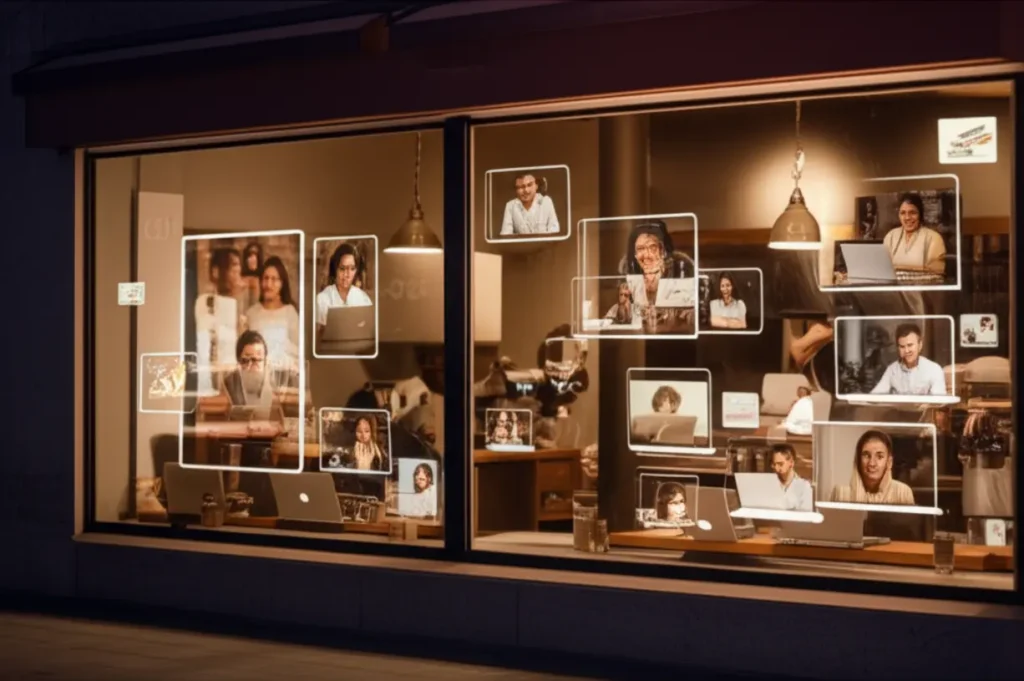The holiday season presents a critical challenge for retailers and marketers. Consumers are increasingly strategic, delaying purchases until deeper discounts emerge. This “waiting game” demands immediate adaptation and a profound understanding of evolving shopper behavior.
You face unprecedented pressure to optimize inventory, refine marketing, and elevate customer service. Traditional strategies are losing their potency in a market defined by economic caution and digital empowerment. Your success hinges on agility.
This article guides you through navigating these complex retail trends. You will discover actionable strategies to meet the modern shopper where they are. Embrace data-driven decisions and innovative tools to transform challenges into significant opportunities.
Navigating the Holiday Shopper’s “Waiting Game”
You must understand the new reality: holiday shoppers are playing a strategic waiting game. Recent market data shows consumers are delaying purchases, prioritizing maximum value. This shift profoundly impacts your traditional retail cycles and sales forecasts.
Economic uncertainties, including persistent inflation concerns, fuel this cautious approach. Shoppers are more financially prudent, carefully allocating their discretionary spending. They seek deeper discounts, often postponing transactions until major sales events.
Digital sophistication empowers this delayed buying behavior. Consumers extensively use price comparison tools and real-time deal alerts. This informed approach enables them to precisely time purchases, securing optimal financial benefits for their budgets.
You perceive an abundance of inventory across various retail sectors. This fuels confidence that desired products will remain available later in the season. Consequently, traditional early-bird incentives lose their former appeal, requiring you to rethink your promotions.
Retailers must meticulously re-evaluate their promotional calendars and inventory management. This notable shift demands adaptable strategies from your business. You must move beyond conventional thinking to capture market share effectively.
Economic Uncertainty vs. Consumer Confidence: The Core Conflict
You witness a direct conflict between economic pressures and consumer willingness to spend. Inflationary concerns force shoppers to be savvier, seeking maximum value. This translates into decreased impulsivity and increased deliberation in buying decisions.
For instance, **Moda Chic Boutique**, a women’s fashion retailer, observed a 25% drop in early November sales. Customers were holding out for Black Friday deals, resulting in a 15% increase in conversion during the final week of November. You must adapt your sales peaks.
You must acknowledge that consumers anticipate deeper discounts closer to major holidays. Your customers are less likely to commit early, expecting better deals. This fundamental shift requires you to adjust your pricing strategies and promotional timing.
Digital Empowerment vs. Impulse Buying: A Strategic Shift
Digital tools have fundamentally reshaped how consumers shop. You recognize that extensive online research and price comparison sites empower shoppers. They meticulously plan holiday expenditures, moving away from spontaneous, impulse purchases.
**TechHub Electronics**, for example, reported a 30% increase in customer inquiries about price matching and future promotions. This indicates a highly informed customer base. You must provide clear, competitive pricing and transparent promotional schedules.
You see shoppers leveraging real-time deal alerts and browser extensions. These tools give them the upper hand in timing their purchases. This means your value proposition must be compelling enough to overcome their natural inclination to wait for the best price.
Mastering Inventory and Forecasting in Volatile Markets
You face significant challenges in inventory management due to these delayed purchasing patterns. Without precise forecasting based on up-to-date holiday shoppers data, you risk costly overstocking or missing critical sales opportunities with stockouts.
Adjusting supply chain logistics becomes paramount to avoid lost sales or costly write-offs. Agility in your inventory strategy is key. You need dynamic models that can respond quickly to shifts in demand, especially during concentrated buying windows.
Traditional sales forecasting methods often fail to predict these sudden surges in late-season demand. You require granular insights into shifting demand patterns. This mitigates risks associated with an unpredictable consumer base.
A typical small retailer might see 20% of their annual revenue generated during the holiday season. A 10% forecasting error can lead to a 2% loss in annual revenue, which translates to tens of thousands of dollars for many businesses. You must minimize these errors.
You need to adapt your operational planning to new hurdles. Shifts in peak demand periods can strain your staffing and customer service resources. Flexible models are essential to scale up or down quickly, ensuring a seamless customer experience.
Predictive Analytics vs. Traditional Sales Forecasting: A Data-Driven Edge
You can no longer rely on historical data alone for accurate forecasting. Predictive analytics offers a significant advantage. This approach leverages machine learning to analyze vast datasets, including economic indicators and social trends, for better accuracy.
**Casa & Conforto**, a home goods store, implemented a predictive analytics system. They reduced overstock by 18% and stockouts by 12% in the last holiday season. This resulted in a 7% increase in gross profit margins. You need this level of precision.
An essential feature for any forecasting tool is its ability to integrate diverse data sources. It must combine your internal sales data with external market trends, competitor pricing, and even weather patterns. You gain a holistic view of demand.
You can calculate the potential ROI of a predictive analytics solution. If a system costs $5,000 annually and helps reduce a $100,000 inventory write-off by 10%, you save $10,000. Your ROI is 100% in the first year alone.
For example, if your current forecasting error leads to 15% lost sales due to stockouts on key items, and a new system reduces this to 5%, you recover 10% of those sales. This directly impacts your bottom line, boosting revenue considerably.
Redefining Holiday Marketing and Customer Engagement
You must rethink your holiday marketing strategies; traditional early-bird incentives may lose efficacy. Consumers hold out for better deals, so you must create targeted, late-stage engagements. These campaigns should capitalize on urgency and compelling value.
Personalization is paramount, leveraging holiday shoppers data to tailor communications. You can send targeted messages based on browsing history or past purchases. This approach keeps specific products top-of-mind, building anticipation effectively.
You must move beyond aggressive discounting as the sole incentive. Emphasize unique value propositions, such as exceptional customer service, extended warranties, or exclusive loyalty programs. This strengthens brand affinity, differentiating you from competitors.
**Brilhante Joias**, a jewelry store, shifted from a blanket 20% off promotion to personalized 15% offers for loyalty members and free engraving for new customers. They saw a 22% increase in average order value. You drive higher-value purchases.
Post-purchase engagement remains critical, extending beyond the holiday rush. Consistent follow-ups, personalized recommendations, and a seamless return process ensure long-term customer loyalty. You build lasting relationships, not just one-time sales.
Dynamic Pricing vs. Static Discounts: Maximizing Revenue
You cannot afford static pricing in today’s dynamic market. Dynamic pricing models allow real-time adjustments based on demand, inventory, and competitor pricing. This strategy helps you attract different shopper segments at various points in the season.
**Esporte Total**, a sporting goods retailer, used dynamic pricing during a flash sale. They increased revenue by 10% and cleared 15% more slow-moving inventory. This agile approach optimizes your sales and profit margins simultaneously.
You need to use predictive analytics to identify optimal pricing strategies. This maximizes revenue during fluctuating demand periods. Implement pricing algorithms that react to market signals, ensuring your offers are always competitive and appealing.
Personalized Offers vs. Mass Promotions: The Power of Relevance
Mass promotions are becoming less effective. You must focus on personalized offers to cut through the noise. Segment your audience based on past purchases, browsing behavior, and demographic data to deliver highly relevant deals.
**Livros & Leituras**, an online bookstore, segmented its email list by genre preference. Personalized recommendations led to a 28% higher click-through rate and a 17% increase in conversions compared to generic newsletters. You connect deeply with your customers.
You achieve greater engagement and higher conversion rates by making offers feel exclusive and tailored. This approach transforms the shopping experience from a passive wait into an interactive journey. You guide purchasing decisions more effectively.
Optimizing Customer Service with Advanced Communication Platforms
You understand that customer communication cannot be understated, especially during peak holiday periods. Rapid, consistent responses to inquiries about pricing, availability, and delivery can convert hesitant browsers into buyers, even late in the season.
Operational planning faces new hurdles. Shifts in peak demand periods can strain your staffing and customer service resources. You need flexible models to scale up or down quickly, ensuring a seamless customer experience even during concentrated buying windows.
To counter the “waiting game,” you must prioritize responsive and personalized engagement. Providing instant support and information builds trust and urgency. This encourages conversion despite initial hesitations, crucial for late-season sales.
**Pneus Rápidos**, an automotive service center, leveraged a multi-user communication platform during their busiest season. They reduced customer waiting times for quotes by 40% and improved customer satisfaction scores by 20%. You boost efficiency and loyalty.
You need a cohesive strategy for all customer touchpoints. Integrating data from every channel is vital for comprehensive market analysis. This ensures consistent, high-quality interactions, from social media to in-store visits, driving positive consumer behavior.
Multi-User WhatsApp vs. Traditional Support Channels: Enhancing Responsiveness
Leveraging advanced communication platforms, such as Multi-User WhatsApp, allows your teams to manage customer interactions efficiently. This ensures prompt replies and coordinated support, turning inquiries into opportunities.
You centralize all customer messages into a single inbox, accessible by multiple agents. This eliminates duplicate responses and ensures a unified brand voice. Your team collaborates seamlessly, reducing response times by up to 50% during peak periods.
Essential features for a multi-user communication tool include: shared inbox functionality, agent assignment, quick replies, and integration with CRM systems. You enhance efficiency and personalize interactions at scale, even with high volumes of inquiries.
Data security and LGPD compliance are paramount. You must ensure the platform encrypts all communications and adheres to strict data protection regulations. Protecting customer information builds trust and avoids hefty fines, safeguarding your business.
The importance of robust support cannot be overstated. A platform like Multi-User WhatsApp provides your team with the tools to offer exceptional service, addressing specific pain points like “how does online scheduling integrate with electronic health records and billing systems?”
Step-by-Step: Implementing Multi-User WhatsApp for Peak Season
You can quickly integrate Official WhatsApp Business API into your customer service strategy. First, select a reliable provider that offers robust multi-agent functionality and integrates with your existing systems. Nexloo provides an excellent solution.
Next, onboard your team with comprehensive training. Teach them how to use shared inboxes, assign conversations, and leverage quick reply templates. This ensures a consistent and efficient customer experience across all interactions.
Then, announce your new communication channel to customers through your website, social media, and email campaigns. Emphasize the benefits of instant support and personalized interactions. You drive engagement to your new channel effectively.
During peak periods, assign specialized teams to handle specific types of inquiries, such as order status or product questions. This optimizes response times and ensures expertise is directed where needed most. You streamline your customer journey.
Finally, continuously monitor performance metrics like response time, resolution rate, and customer satisfaction. Use this feedback to refine your processes and improve your service. You create an agile and highly effective customer support system.
Building Long-Term Trust and Loyalty Beyond the Holidays
You must recognize that success extends beyond the holiday season. Building long-term trust and loyalty requires consistent effort and a genuine commitment to your customers. Your post-purchase engagement is as critical as your initial sales efforts.
For example, **Casa Pet Feliz**, an online pet supply store, implemented a personalized “thank you” campaign. They offered a 10% discount on future purchases and shared useful pet care tips, leading to a 35% repeat purchase rate. You foster lasting relationships.
You need to adapt to evolving consumer behavior and utilize tools that enhance communication. This is no longer optional; it is essential for maintaining strong market performance and shaping resilient retail trends in this dynamic landscape.
The future of retail trends heavily relies on advanced data analytics and artificial intelligence (AI) for hyper-personalization. Insights from holiday shoppers data fuel predictive models, allowing you to anticipate individual preferences and offer tailored recommendations.
You will gain a significant competitive advantage by prioritizing transparency, sustainable sourcing, and ethical manufacturing. Market analysis consistently shows consumers, especially younger demographics, factor environmental and social impact into their buying decisions.
Sustainability Initiatives vs. Pure Price Competition: Differentiating Your Brand
You can differentiate your brand by embracing sustainability and ethical practices. Consumers are increasingly seeking brands that align with their values, moving beyond purely price-driven decisions. This strengthens brand affinity significantly.
**Orgânica Fresca**, a natural food market, highlighted its local sourcing and reduced plastic packaging. They saw a 15% increase in customer loyalty and a 5% bump in sales, even with slightly higher prices. You attract a dedicated customer base.
You must communicate your values clearly and authentically. This strong shift in consumer behavior requires companies to convey their mission effectively. You influence purchasing choices beyond price alone, building a truly loyal following.






